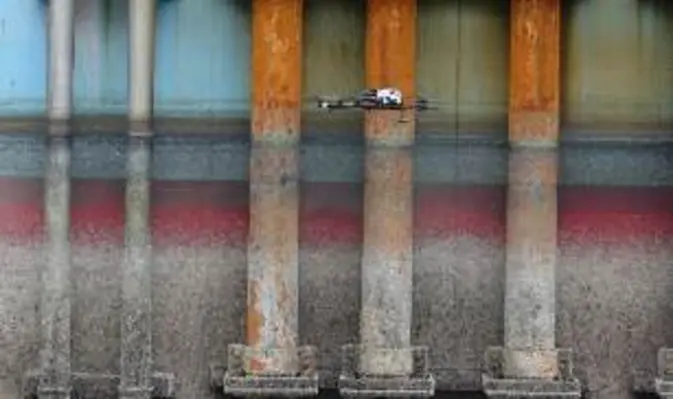Lloyd’s Register has issued the first phase of its guidance notes for drones and Unmanned Aircraft Systems (UAS), which will give operators in the energy and marine industries confidence in using UAS for offshore, marine and onshore surveys and in-service inspections, according to the company
“We are developing these guidance notes to provide a consistent approach to risk in UAS and drone deployment, offering practical operational considerations relating to regulations, personnel, quality, safety, hardware, software and operations,” said Lloyd’s Register’s chief technology officer, Nial McCollam.
UAS are piloted remotely or autonomously, which reduces the need to send personnel into high-risk and challenging environments. They provide an effective alternative to traditional methods of in-service operational assessment and survey, especially structures and assets at significant heights, difficult to access locations and hazardous environments. Major operators such as Shell and Maersk Drilling are among the early adopters of this innovative technology. Maersk Drilling and partners have conducted a number of pilots in collaboration with Lloyd’s Register to assess UAS capabilities for inspection at heights and difficult areas.
The guidance notes from Lloyd’s Register will be updated regularly to provide industry with the latest practical information on issues such as how best to use UAS for inspection in confined spaces, which is particularly relevant in energy and marine applications where Class surveys are needed.
“Rapid advancements in hardware and software, including air stabilisation, pre-flight planning tools, obstacle detection and avoidance technology, have transformed these small aircraft into viable business tools,” said Chris Chung, head of strategic research at Lloyd’s Register.
“In addition to tried and tested applications such as safely inspecting assets of flare stacks and other outdoor critical infrastructure, we are collaborating with industry to enable inspection of the undersides of offshore structures, maritime vessels and confined spaces such as storage tanks,” he added. “With increasing capabilities, we believe UAS will in the future have the ability to autonomously follow a pre-defined flight path, enabling higher measurement accuracy and the collection of more relevant data, while inspecting and data-gathering in real-time.”









